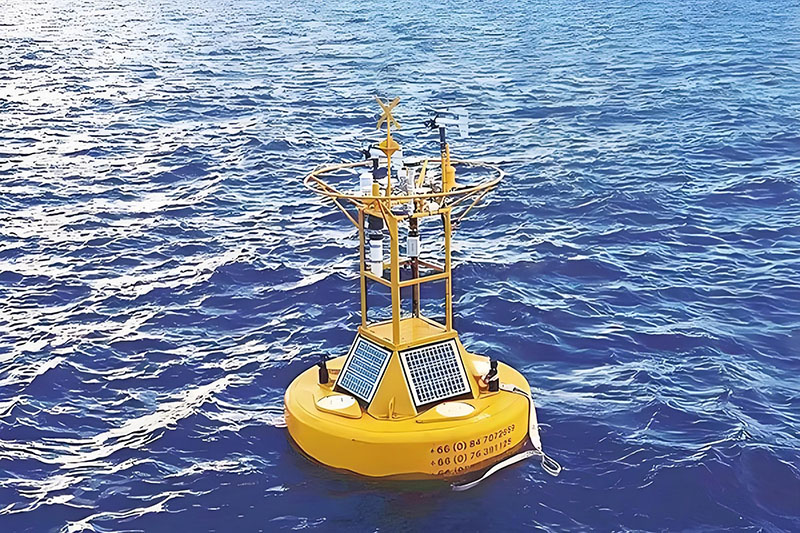
Critical Applications and Technological Breakthroughs of Atomic Clocks in Deep-Sea Exploration
Deep-sea exploration, as a frontier in uncovering Earth’s final frontiers, demands unique high-precision time synchronization capabilities. Atomic clocks, with their exceptional stability and autonomous timekeeping, have become core enablers for precise coordination in deep-sea operations. Below is a systematic analysis of their innovative applications across six dimensions:
1. Unique Time Synchronization Requirements in Deep-Sea Environments
1. No Satellite Signal Coverage
Deep-sea environments completely block GPS/BeiDou signals, rendering traditional timing systems ineffective. Atomic clocks operate in autonomous holdover mode, maintaining <1μs timekeeping error over 30 days without external references.2. Extreme Physical Conditions
At depths exceeding 6,000 meters, equipment must withstand >60 MPa pressure and 2-4°C temperatures. Atomic clocks employ titanium alloy vacuum chambers and multi-layer insulation, achieving frequency stability better than 1e-12 within -5°C to +50°C.3. Multi-Node Coordination
Deep-sea observation networks integrate heterogeneous devices like AUVs (Autonomous Underwater Vehicles), seabed seismometers, and chemical sensors. Atomic clocks enable ±100ns-level synchronization across the network via IEEE 1588v2, supporting data fusion.
2. Technical Integration of Atomic Clocks in Deep-Sea Systems
1. Enhanced Autonomous Navigation
Inertial Navigation Compensation
AUVs equipped with miniaturized rubidium atomic clocks paired with fiber-optic gyroscopes:
Calibrate with seabed acoustic beacons every 8 hours, reducing dead reckoning errors from 1 km/day to <100 m
Enable 6,000-meter abyssal missions with 90-day continuous operation
2. Seabed Seismic Monitoring Networks
Precise Timestamping of Microseismic Events
Chip-scale atomic clocks (CSACs) integrated into seabed seismometers:
Achieve 10ns-level seismic wave arrival time recording (100x better than quartz clocks)
Eliminate cross-node phase deviations via underwater acoustic time-frequency references
3. Deep-Sea Laser Communication Synchronization
Time-Division Multiplexing Optimization
Atomic clock-driven TDMA (Time Division Multiple Access) in laser communication systems:
10ns-level time slot allocation improves channel utilization by 40%
Enable 20 Mbps data transmission at 4,000 meters with bit error rate <1e-9
3. Key Technological Breakthroughs
4. Representative Application Scenarios
1. Full-Ocean-Depth Scientific Platforms
The "Fendouzhe" manned submersible uses atomic clock synchronization to:
Align robotic arm movements with 4K camera frames (<1ms timing error)
Synchronize multi-spectral sensor data with ±50μs accuracy
2. Natural Gas Hydrate Extraction Monitoring
Seabed wellhead arrays with atomic clock synchronization:
Achieve 0.1°@100Hz phase coherence in 32-channel seismic systems
Improve microseismic event localization to 5-meter precision
3. Deep-Sea Ecological Studies
Atomic clock-coordinated biosurveillance systems:
Synchronize 16x 4K cameras with <100μs frame alignment for motion trajectory reconstruction
Achieve 99.8% temporal correlation between chemical and optical sensors
5. Challenges and Solutions
1. Energy Constraints
Thermoelectric generators: Harness 200°C thermal gradients at hydrothermal vents for continuous power
Ultra-low-power mode: Reduce standby power to 0.2W, extending operation to 1 year
2. Long-Term Stability
Self-calibration algorithms: Activate cesium frequency standards for online recalibration every 30 days
Seabed reference networks: Deploy fixed atomic clock nodes connected via optical cables
3. Cross-Medium Synchronization
Water-air interface relays: Buoys with dual-mode (acoustic/RF) atomic clocks bridge deep-sea and satellite timing
6. Future Directions
1. Chip-Scale Optical Clocks
Develop miniaturized optical lattice clocks using erbium-doped fiber frequency combs:
Target stability: 1e-15@1s
Pressure tolerance: 150MPa
2. Quantum Time Transfer Networks
Entangled photon-based synchronization networks to surpass acoustic limitations:
Target precision: ±1ns
Anti-jamming capability: 100x improvement
3. AI-Driven Predictive Maintenance
Integrate machine learning for proactive performance management:
Predict atomic clock degradation 72 hours in advance
Dynamically adjust holdover strategies for 99.999% reliability
Conclusion
Atomic clocks are revolutionizing deep-sea exploration by transitioning from standalone timekeeping to networked synchronization. Breakthroughs in pressure resilience, energy harvesting, and quantum technologies will enable a three-tier time-frequency architecture: seabed cesium references – mobile rubidium nodes – surface optical clock relays. This evolution provides nanosecond-level temporal resolution for uncovering deep-sea mysteries while establishing critical infrastructure for resource exploitation, seismic early warming, and ecological monitoring.
MESSAGE
CONTACT US
Please use the form below to get in touch.
If you need a reply we will get in touch as soon as possible.

